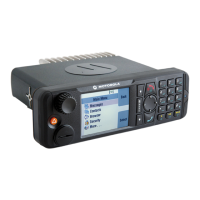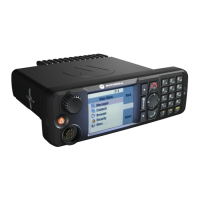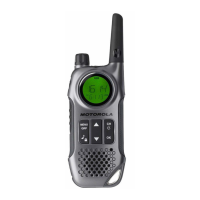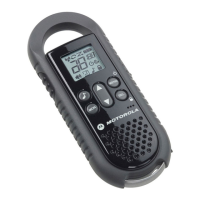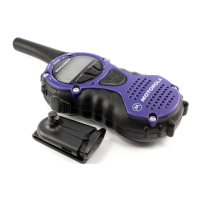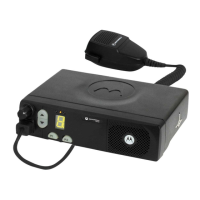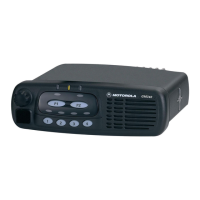The time-stamp on the Call-Out alert indicates the time and date when the Call-Out is received.
To read an entire Call-Out message, scroll down the screen by pressing the Down Navigation key. The
length of the message is indicated by the vertical bar on the left of the screen.
Figure 8: Call-Out Message
Call-Out 137
Severity-2
SC TG1
Accept Reject
NOTE: Message protection functionality is enabled in the Inbox and Call Out Inbox. Users can
only delete unprotected messages.
5.3.1
Types of Call-Out Alerts
There are five types of the Call-Out alerts:
Normal Call-Out
An alert message that is sent by a dispatcher either to a single radio or to a group of radios. There
are two types of Normal Call-Out:
With user receipt
The radio gets to the Accepted phase when you:
• select
Accept, Reject, or Standby.
• the acknowledgment timer runs out.
Without user receipt
The radio gets to the Accepted phase when you:
• press Menu or any key except for the Emergency button, or the Rotary Knob.
• the acknowledgment timer runs out.
The Normal Call-Out mode is ended when the validity timer runs out.
Storm Plan
An alert message that is sent by a dispatcher to a group of radios. To raise its reliability, it is sent
several times. You are not able to respond to the Call-Out alert and any key press takes you to the
information phase.
The Call-Out mode is ended when one of the following scenarios occur:
• the acknowledgment timer runs out.
• you press any key, except for the Emergency button or rotary knob.
• you press the Messages and Exit softkeys.
Simple Call-Out
An alert with the functionality similar to full Call-Out but without the information phase. There are
two types of Simple Call-Out:
With user receipt
The Call-Out mode is ended when the acknowledgment timer runs out, or when you select Accept,
Reject, Standby, or reply with a text message.
Without user receipt
The Call-Out mode is ended when one of the following scenarios occur:
68015000180-MR
Chapter 5 : Features
124

